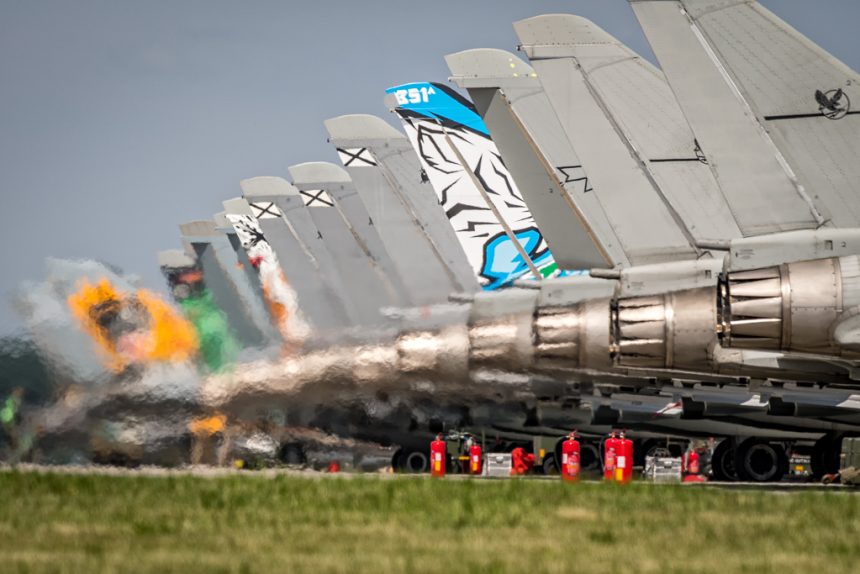We attended both Poznan Air Show and NATO Tiger Meet. And here’s a detailed report.
NATO Tiger Meet
This year’s edition of the NATO Tiger Meet exercise took place in Poland, at the 31st Tactical Air Base in Poznan-Krzesiny, between May 14 and May 25, with the media day being held on May 18.
We were given a chance to participate in the distinguished visitors and media day at the base to watch the operations undertaken by the Tiger squadrons gathered at Krzesiny that, throughout the course of the operation, has been responsible for planning, preparing and conducting, as well as managing the training operation. The base is a part of the 2nd Tactical Air Wing of the Polish Air Force.
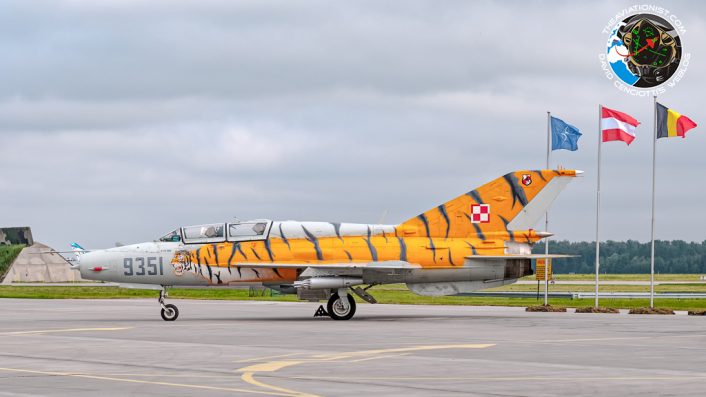
The story of the Tiger Meets dates back to the year 1960. Back then USAF’s 79th Tactical Fighter Squadron and RAF’s 74th Squadron got themselves involved in a joint training operation, and then, one year later, a new tradition emerged to gather the squadrons that have a tiger in their emblem together within a single training event. The meetings were successful and Mike Dugan, who was the main initiator of the undertaking, has founded the NATO Tiger association.
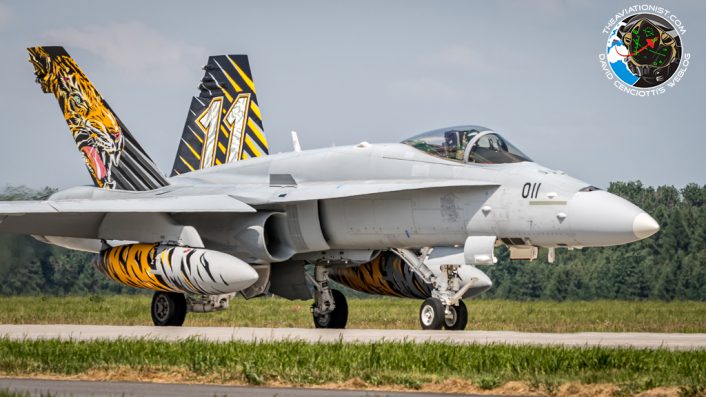
6th Fighter Squadron is the Tiger squadron of the Polish Air Force. The unit is based in Poznan-Krzesiny and it flies the F-16 “Jastrząb” Block 52+ fighter aircraft. It made its debut during the NTM event back in 2011 – it was also a Tiger Meet that marked the NTA 50th Anniversary at Cambrai airbase, France. It did not take long for the Poles to succeed, as in 2014 they were voted the Best Flying Squadron, also becoming a full member of the NTA.
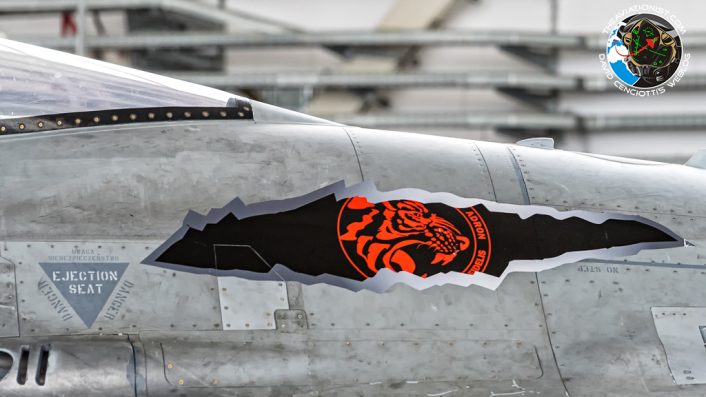
Within the structure of the Polish Air Force the unit is tasked with air-to-air and air-to-surface missions. It is interoperable with the NATO assets, and it has been proven, as the Polish officials suggest, during numerous international exercises, including: Red Flag Alaska, Frisian Flag (Netherlands), NATO Tiger Meets, Brilliant Arrow (Norway), Tactical Leadership Program (Albacete, Spain), Blue Flag (Israel), Eagle Talon, Cobra, Anakonda or Raróg.
The main objectives of the NTM18 training event included gaining more knowledge about combined air operations through active involvement in mission planning. Force integration is a result of the above – the participants learned to solve different problems throughout the course of the exercise. The event is also largely focused on conducting COMAOs (Combined Air Operations).
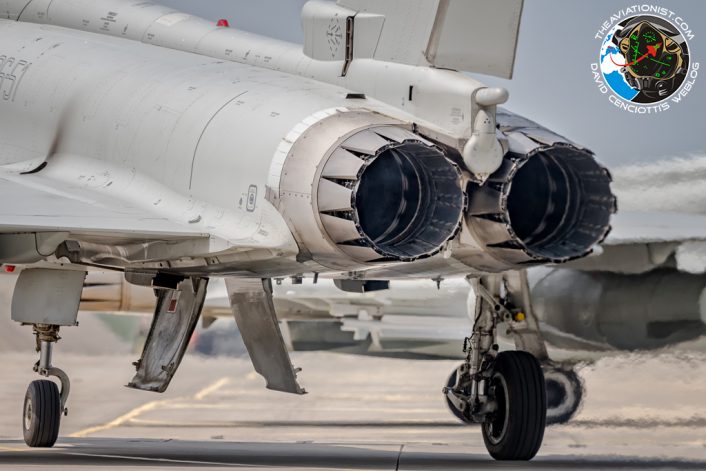
Indirectly, the training is aimed at improving and enhancing the skills of NATO cooperation, in line with the relevant procedures (SUPLAN M, SUPLAN D, 80-6). The fighter aircraft also had to work together with airlift and helicopter and missile and IADS (Integrated Air Defense System) assets, within the scope of COMAO scenarios. Land component was also involved in the exercise, for the sake of deepening the level of interoperational cooperation. Finally the training also involved FACs/TACs (Forward/Tactical Air Controllers) – within the scope of CAS (Close Air Support) sorties.
The training adopted a scenario of an international crisis set in a context of conventional and hybrid warfare settings. IADS, massive offensive strikes behind the enemy lines and short-term targeting were all a part of the missions flown, assuming that air support would be provided to the land assets.
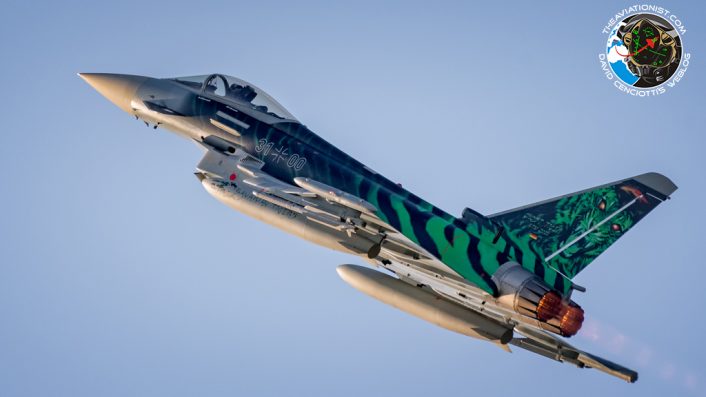
The training involved defending of a designated area or border defense. The aircraft were also used for protection of high value assets, and the operations between IADS and airborne assets were closely coordinated to gain and maintain air superiority and protect own forces. Strike missions involved destruction of the critical infrastructure and SEAD/DEAD (surpression/destruction of the enemy air defense) sorties. Time-sensitive targets were also involved in the scenarios with pilots also tasked with self-searching the targets and working together weith JTACs. Finally, the operation also involved some scenarios in which the fighter aircraft were supporting untrained personnel.
NTM 18 involved around 2000 persons, hailing from Austria, Belgium, Czech Republic, France, Germany, Greece, Hungary, Italy, the Netherlands, Great Britain, Spain and Turkey, as well as Switzerland that plays a role of the partner nation. The formations have carried out 8 COMAO sorties (integrated ones) and more than 50 training missions as a part of shadow waves.
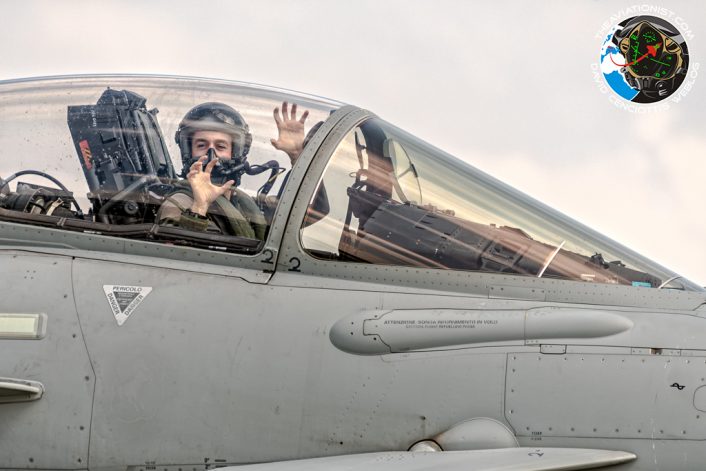
As NTM is an integrated operation it, alongside the air force, also involves land and airborne assets, special forces, artillery, IADS, ground recon assets, unmanned systems, logisticians, liaison personnel, medics, civil-military cooperation group as well as a PsyOps component.
Finally, it shall be noted that NTM took place at several Polish bases, with the Krzesiny airbase acting as the main hub for the fighter assets. Other locations involved include Powidz, Mirosławiec, Świdwin and Malbork. Drawsko, Ustka, Nadarzyce, Żagań and Biedrusko field training ranges act as the operational areas, along with other airspace sections dedicated for the training operation.
Alongside jet aircraft (mainly Typhoons and F-16s), Gazelle, Merlin, Super Puma and AB212 helicopters provided CSAR support for the exercise. A GFD Learjet was another interesting asset that simulated the Electronic Warfare aircraft during the operational activities. NATO AWACS platform, also supporting the exercise, were deployed to the Poznan International Airport, not at Krzesiny, which posed an interesting challenge within the scope of civil-military cooperation.
Unfortunately and sadly, organization-wise, both the media day and the spotters day were less than ideal.
When it comes to the spotters day, numerous mixed opinions emerged, especially in case of the foreign attendees, complaining about the logistics (transport operation – spotters were transported via buses to the base, from the M1 mall car park in Poznan – the procedures were too slow, too little buses and too little personnel were assigned to handle the transport of around 1200 people to the base), position for the photographers (heavily backlit one, near the old MiG-21 hangars), shooting space (too short span along the runway) or security guards who entered the field of view of the photographers. Also, it was impossible to include the undercarriage in the shots at some spots in that position. Finally, the place where the spotters were located made it impossible for them to capture the essence of the NATO Tiger Meet open days – taxing jets and the pilots assuming tiger poses in their cockpits. Tiger spirit also could not have been felt in the spotters’ area, at least not to a usual extent associated with the NTM.
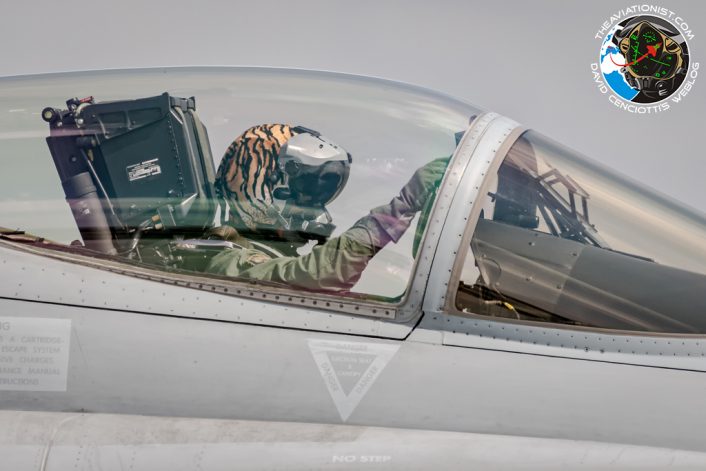
It is also unclear as to who has been responsible for the chaos, as the event was organized jointly by the MTP (Poznan International Fair) and by the Polish military. Last, but not least, the spotter day ticket confirmations were sent out late due to the military counterintelligence verification required to access the base. This has been a major stumbling block for foreigners who could not have planned their trips to Poznan in advance. The question that may be raised is why the verification process took so long? Media communications pertaining to the event could have been better globally, and this is undoubtedly a domain where there is a lot of room for improvement, given the reputation the NATO Tiger Meet brand entails.
Poznan Air Show – Tigers saving the day!
Notably (and unusually as well) the NATO Tiger Meet exercise was coordinated in time with the Poznan Air Show event (formerly known as Aerofestival), organized at the Henryk Wieniawski Ławica International Airport in Poznan. The Aviationist has been attending the said event since its very inception, and we were, with a major satisfaction, observing the two editions grow and get better. After the first two editions (2015 and 2016), a gap year occurred, with the rebranded show coming back into existence this year.
According to the official press release issued by the organizers, the show grounds were visited by almost 70K people, with 80 aircraft being showcased in the air and on the ground – 720 minutes of dynamic displays could be watched by the audience. The dynamic display portion of the show was divided into three thematic blocks: 100th Anniversary of Poland’s Independence, 100th Anniversary of the Greater Poland Uprising and 100 Years of the Polish Military Aviation, as well as a NATO Tiger Meet section of the show.
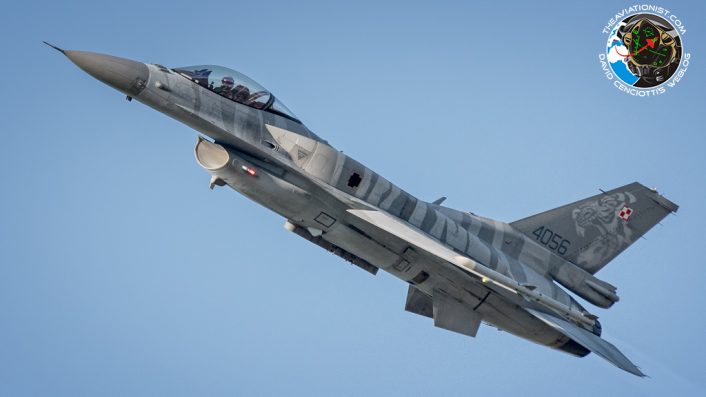
Within the static display, decisively, the AWACS was one of the highlights, alongside numerous NATO Tiger Meet fighter aircraft wearing the tiger liveries.
Meanwhile, the dynamic displays were varied, yet undoubtedly the program was not as rich as the one back in 2016. Several warbirds performed their displays in the air – CAC13 Boomerang was the most unique one. Also, Artur Kielak, one of the best known Polish aerobatic pilots, besides performing his own crazy display, also flew a duo with the Yak-3U replica. Another highlight was the “Pterodactyl Flight” WWI reenactment group, whose display was, even though less dynamic, quite interesting, as it featured, for instance, the famous Fokker Triplane replica.
The NATO Tiger Meet themed section of the show featured a dynamic Spanish Eurofighter demo and two Gripen displays (Czech and Hungarian ones), as well as a demo display of the Austrian Saab. The French Navy sent its Rafale role demo team to the Poznan air show and, undoubtedly, this was a highlight of the NTM portion of the show. The jets made a simulated carrier approach with their landing hooks down at Ławica, which was an interesting sight to see. Finally, the Czech Air Force Mi-24 Hind demo closed the NTM themed part – unfortunately, the Alien-painted Mi-24 was presented on the static display, not in the air.
The last portion of the show that commemorated the 100th anniversary of the Polish military aviation included Spitfire display – referring to the famous RAF Squadron 303, and Polish TS-11 Iskra. The displays also included a MiG-29 solo display and F-16 Tiger Demo – nicely outlining the history of the Polish military aviation.
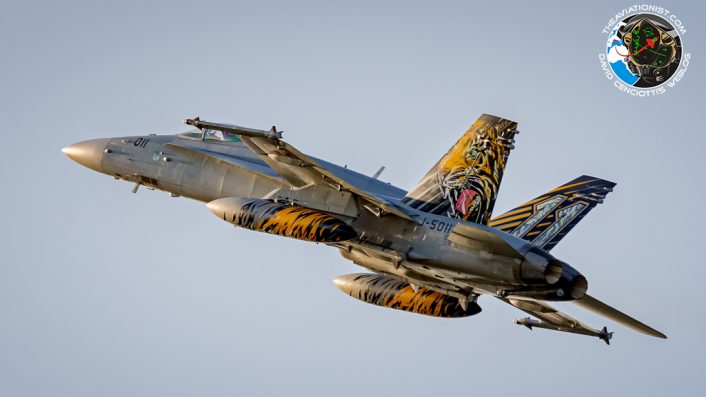
Overall, the NTM section saved the show. Had it not been for the military jets hailing from the Tiger squadrons the Poznan Air Show event would have been less than impressive. Let’s hope that next year the organization is going to be better and the flying programme – more interesting. The event bears some significant potential and this potential has not been used fully during this year’s edition of the air show.
Summary
Summing it up, last weekend in Poznan, or in fact, last two weeks, have been quite intense for any avid fan of the military aviation. It was also a good way to start the air show season this year. We hope that the main centenary event that is going to be held in Radom in August will be even more impressive, display- and organization-wise.
All images: Jacek Siminski
More NTM18 Images can be found here, more Poznan Air Show images can be found here.

